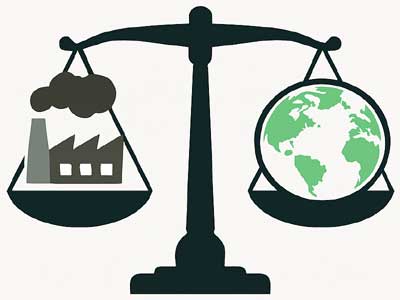In the lofty heights of the Himalayas, where clouds drift over snow-capped peaks, a dangerous secret is being carried on the wind. A new scientific study has found that clouds—once believed to offer the purest drinking water—are silently ferrying toxic heavy metals from polluted lowlands to some of Earth’s highest, most fragile ecosystems.
The findings not only shatter the myth of ‘clean’ mountain rain but also ring alarm bells for human health, with potential risks ranging from cancer to developmental disorders.
Read in Hindi: हिमालयी बादलों में मौजूद जहरीली धातुएं स्वास्थ्य के लिए हैं खतरनाक
Metals in the cloud are a matter of growing concern due to their adverse impact on human health on a wider scale through continental long-range transport. However, information regarding metal contamination of low-level clouds, particularly the late summer and early monsoon clouds in India, is lacking.
Bose Institute, an autonomous institute of the Department of Science and Technology, spotted toxic metals in non-precipitating clouds during the onset of monsoon over the Western Ghats and Eastern Himalayas. They also found that clouds over the Eastern Himalayas had 1.5 times higher pollution levels due to an increase in 40-60 per cent higher loading of toxic metals like Cadmium, Copper, and Zinc emitted from heavy traffic and industrial emissions that cause high health risk factors from carcinogenic diseases.
The Atmospheric research team, led by Dr Sanat Kumar Das, Associate Professor, Bose Institute, quantified the risk of carcinogenic and non-carcinogenic diseases through inhalation, ingestion, and dermal absorption. They conducted a detailed study using statistical models to identify the possible sources of these metals.
The results from the current observation and simulations showed that children are at a 30 per cent higher risk of such toxic metals than adults in India. Inhalation of polluted clouds over the Eastern Himalayas containing high concentrations of toxic metals is the most likely route for non-carcinogenic diseases.
Besides, the study showed that the health risk for the occurrence of carcinogenic diseases has increased due to inhalation of dissolved Chromium present in clouds. The study highlights that the Eastern Himalayas experience higher polluted clouds containing toxic metals like Cadmium, Chromium, Copper, and Zinc coming from vehicular and industrial emissions over foothill regions. Inhalation of such polluted clouds is the potential cause of carcinogenic and non-carcinogenic diseases in India.
Clouds acting as a transport medium carry dissolved heavy metals, posing serious health risks to people, due to carcinogenic and non-carcinogenic diseases, through skin contact, inhalation, and consumption of precipitation-collected water in high-altitude regions.
The study published in Environmental Advances opens up a new direction for research on atmospheric pollution and public health. However, the analysis shows that Indian clouds till now remain relatively less polluted, placing India in a safer health zone compared to countries like China, Pakistan, Italy, and the USA.


















Related Items
Breakthrough in improving wearable health monitoring systems
Bihar: In whose favour the political wind blowing…?
Bangladesh’s Radicals vs India’s Liberals, A dangerous imbalance…